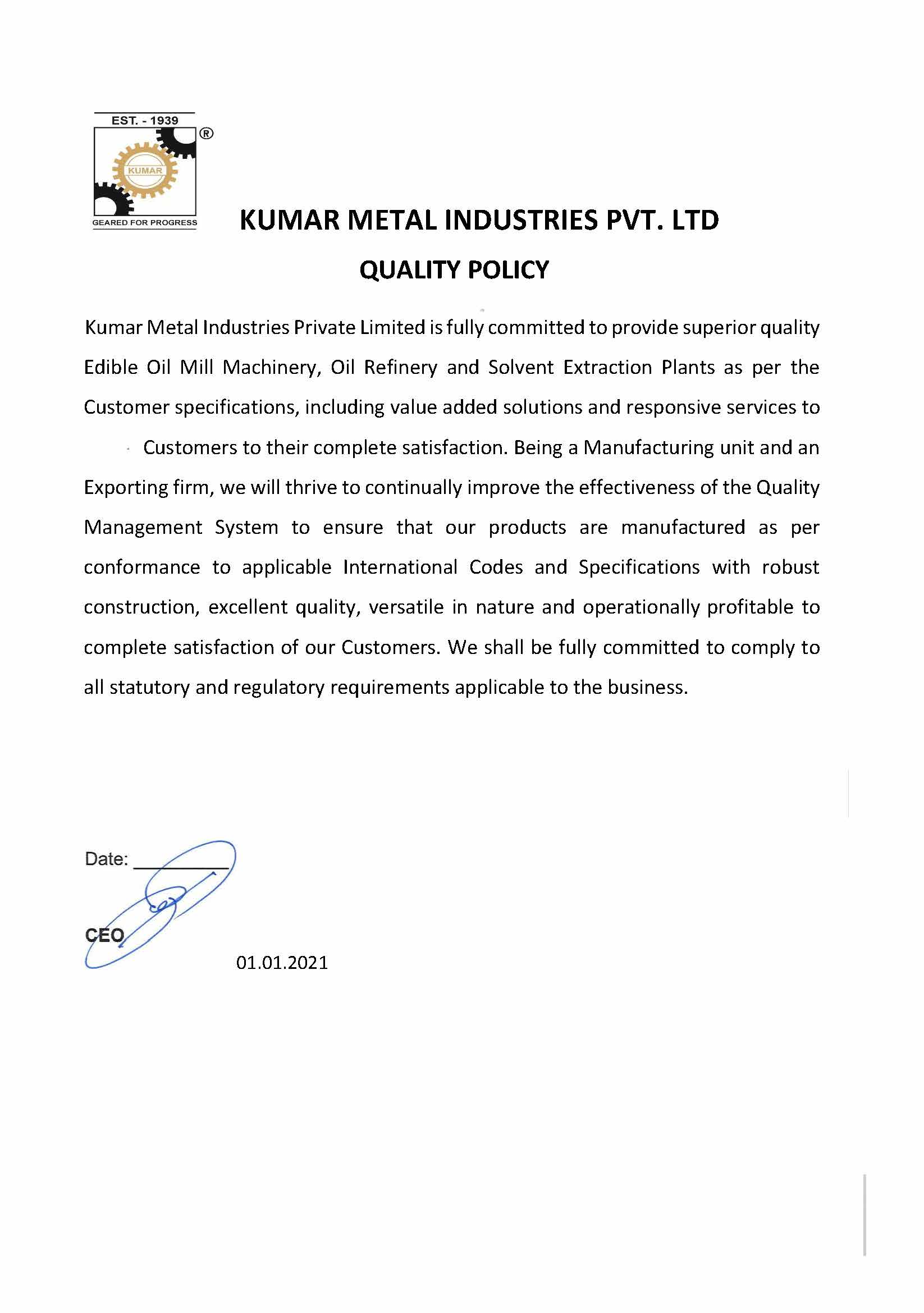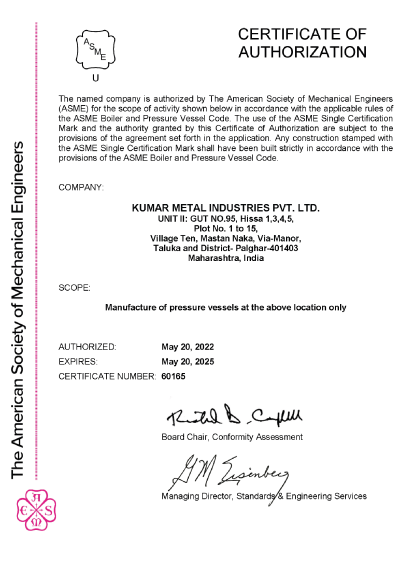Oleochemicals

Oleochemicals are manufactured from vegetable oils or fats by splitting process (Hydrolysis reaction) followed by various purification and reaction processes. Oleochemicals have multiple applications in cosmetics, lubricants and other chemical industries.
Oleochemicals processes
Splitting or hydrolysis is usually performed under high pressure (50 - 55 bar) and temperature (240-260oC) using water and steam reacting with oil or fat. This forms crude split fatty acids and glycerine dissolved in the excess water called sweet water.
Different fats and oils are used to yield the appropriate chain length profile for desired products. Splitting takes place in a single or multiple high-pressure splitting column with a heat recovery section for economical process.
Fat/oil is fed at the bottom of the column, and water from the top and the column is pressurized with direct high-pressure steam. As a result, fatty matters flowing upwards react with the water forming fatty acids and glycerine, which is removed by the water flowing downwards, consequently allowing the completion of the reaction.
Fatty acids at the outlet of the splitter are flashed under a vacuum to ensure drying and avoid splitting reversion. Fatty acid generated is crude fatty acid further purified by fatty acid distillation. Glycerine in water (Sweet water) is flashed at atmospheric pressure, and the flashed steam is utilized to pre-concentrate the sweet water under a vacuum. This sweet water is pre-treated to discard dissolved or emulsified fatty matter and concentrated by a multi-effect evaporator to generate the crude glycerine and further purified by glycerine distillation, deodorization and bleaching process.
TYPES OF FEEDSTOCK
Oil (mainly TG, DG and MG) can be split by hydrolysis. In industrial practice, the most widely used feedstocks are High FFA and non-edible grade tallow, lard, palm oil, coconut oil, palm kernel oil, rice bran oil, acid oil and fatty acid distillate from refining plants. Different fats and oils are used to yield the appropriate chain length profile for the desired products.
SPLITTING PROCESS
In the splitting process, triglyceride is hydrolyzed and converted stagewise to diglyceride, monoglyceride, and glycerol. Glycerine and water are removed continuously to shift the equilibrium and generate fatty acids.
- TG + H2O <--> DG + FFA
- DG + H2O <--> MG + FFA
- MG + H2O <--> Glycerol + FFA
An incomplete fat splitting process will result in a product contains mixture of mono, di as well as up to some extent triglyceride.
Splitting involves the following stages:
- Deaeration: Splitting is carried out at a very high temperature. Before splitting, the feedstock is deaerated to ensure no air or oxygen is present in the feedstock.
- Splitting: Fatty acids are produced by counter-current oil flow with water and sparge steam in the splitting column under a high pressure of 50-55 bar and temperature up to 260°C.
- Fatty Acid drying: Crude fatty acids from the splitting column are flashed and dried to remove the residual moisture. Crude fatty acids are relatively dark in colour and contain impurities. They are subsequently purified or separated into fractions through fractional distillation.
- Glycerine-water pre-concentration: Crude glycerine is discharged from the bottom of the splitting column continuously and flashed to increase the concentration of glycerine.
- Pre-treatment of glycerine-sweet water: Emulsified Fats are discarded by converting into non-soluble soap and filtered out.
- Evaporation: Sweet water is evaporated in a multiple-effect evaporator to increase the concentration to 80-88%.
Fatty acid distillation distils fatty acid under vacuum and high temperature to produce distilled fatty acids. The distillation column consists of structured packing to fractionate heavy and light phases. The bottom residue i.e. pitch, is sent to the storage after distillation.
Application: Fatty acid distillation is used to remove odoriferous components and unconverted mono, di and triglycerides.
FATTY ACID FRACTIONAL DISTILLATION
Fractional distillation (or thermal fractionation) allows the separation of fatty acid mixtures into narrower cuts or even individual components based on different boiling characteristics.
- Coconut oil or palm kernel oil or it’s fractions can be used to get C8, C10, C12, C14, C16 and C18 pure fractions and a mixture of C8 and C10, a mixture of C12 and C14 and a mixture of C16 and C18 fatty acids
- Palm oil and its fractions, soft oils and its byproducts like soya acid oil and sunflower acid oil can make C16 and C18 pure fractions and a mixture of C16 and C18 fatty acids.
- Mustard or rapeseed oil can be used to produce C18 and C22 rich fractions (Behenic and Erucic Acid).
A fractional distillation system consists of a deaerator, fractionation column, heating system, condensing system and vacuum system.
Fatty acids are heated using a falling film evaporator. Falling film evaporators allow fatty acid to be evaporated gently and ensure low residence time.
Fatty acid fractionated in a packed column equipped with structured packing allows high separation efficiency and low-pressure drop. Fatty acid vapour is condensed using a surface condenser and steam generator (for heat recovery). Fractional distillation of fatty alcohols and fatty acid esters takes place in the packed column tower, followed by cooling in condensers to obtain pure fractions or various cuts based on the chain length.
FATTY ACID FRACTIONAL CRYSTALLIZATION
Fatty acid fractional crystallization allows the separation of fatty acid mixtures into narrow cuts or even individual components based on different melting or solidification points. It is used for highly unsaturated and heat-sensitive materials to avoid thermal decomposition. The process involved in such systems is crystallization followed by filtration.
The two steps in fatty acids fractional crystallization are crystallization followed by separation. A membrane filter is used for the separation of different fractions.
DRYING
Treated glycerine contains residual water which has not been totally removed by evaporation during glycerine treatment. This crude glycerine is therefore subject to a final drying step. Water is evaporated from the top of the flash chamber. Final dried glycerine is discharged and sent to the glycerine distillation section.
GLYCERINE DISTILLATION
Glycerine is distilled in a packed tower, fractionated to separate both heavy and light boiling impurities and condensed. Yellowish glycerine is condensed in a separate scrubber. Deodorization can be supplied according to the material being processed. The bottom product (residue) from the distillation column, i.e. pitch, is cooled and conveyed to storage.
BLEACHING
Bleaching involves adsorption at fixed beds of activated carbon - glycerine bleaching to remove colour where activated carbon powder is used as a bleaching agent. The glycerine is then passed through polish filters, cooled and packed in airtight containers.
Hydrogenation is used to change the physical characteristics of natural fats and oils to improve its texture and stability. Hydrogenation of vegetable oils and fatty acids involves the addition of hydrogen, in the presence of a Nickel catalyst, to the carbon-carbon double bonds present in the fatty acid chains. There are three types of hydrogenation processes:
BATCH HYDROGENATION
Two types of reactors are used in batch hydrogenation - agitator reactors and loop reactors. In agitator type reactors, fats or oils with a catalyst are mixed with hydrogen gas in the autoclave. Hydrogen gas is sparged through a specially designed sparger located at the bottom of the autoclave. Agitator type autoclaves are used for selective and slow hydrogenation.
In loop type reactors there is a venturi loop in which the oil, catalyst and gas mixes; due to vigorous circulation this reaction is very fast and spontaneous which results in a low residence time at high temperature profile. A candle filter with auto wash arrangement is used to filter the catalyst. These reactors are suitable for full hydrogenation with low residence time.
Advantages:
- Used for small capacity plants
- Selective hydrogenation is possible in agitator type reactor
- Low iodine value can be achieved by venturi loop reactor
- Nickel catalyst consumption is minimized
SEMI-CONTINUOUS HYDROGENATION
Proper arrangement for feeding and discharge makes the hydrogenation reaction semi-continuous. The unique design of the agitation system enables the hydrogenation cycle to be reduced to a minimum. Both agitator type as well as loop reactors are used for semi continuous hydrogenation.
Advantages:
- Reduced steam consumption due to regenerative heating and cooling
- Low power consumption
CONTINUOUS HYDROGENATION
Continuous hydrogenation reactors are single towers where oil or fatty acid with a catalyst is mixed with a very high flow rate of hydrogen gas supplied to the tower from one end and hydrogenated material continuously discharged from another end. Excess hydrogen is compressed and reused.
Advantages:
- Used for large capacity plants
- Full automation is possible in continuous hydrogenation process
Soap noodles can be manufactured either from refined vegetable oils, animal fats or distilled fatty acids, which is further used in soap industries to make soaps. The process of manufacturing soap noodles is saponification - the fatty acid phase is mixed with the aqueous phase (caustic lye) in the homogenizer and transferred into the loop reactor for saponification. Once the reaction is completed, liquid soap is transferred to the vacuum dryer and further to plodder worm to form soap noodles.
The Kumar Guarantee
Our innovative engineering solutions and superior manufacturing standards help you optimise operating costs and improve efficiency. We dedicate ourselves to every project we take on to ensure a successful outcome for your company. We've delivered over 700 projects to over 500 customers in more than 65 countries. Let us help you deliver your next one successfully.









